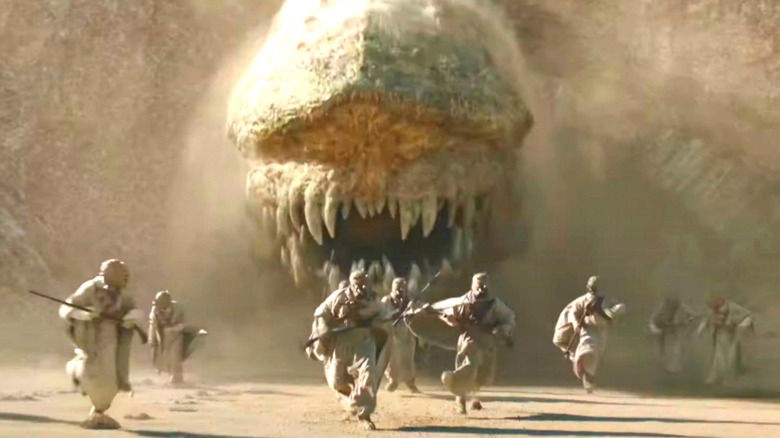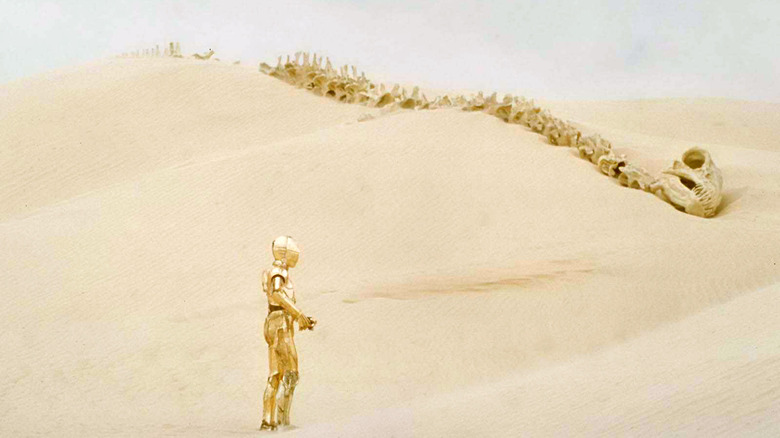The Krayt Dragon In Star Wars Explained
The desert planet of Tatooine is one of the "Star Wars" universe's most iconic settings and has been prominently featured in five of the nine films that comprise the "Skywalker saga," along with innumerable mentions in books and TV shows. Most recently, it was introduced as the main setting for "The Book of Boba Fett" on Disney+. Under two fiery suns, the planet is a hostile landscape of sand dunes, scavengers, and savage beasts. Stay in the city and you'll find yourself under the rule of daimyo gangsters, but travel too far into the sandy plains and you'll soon meet a grisly end in the mouth of a sarlacc or at the sharp end of a Tusken Raider's gaffi stick.
One of the most terrifying beasts to roam the Tatooine sands, however, are krayt dragons, which even the most seasoned veterans of the harsh environment hope never to cross paths with. Over the years, they've been mentioned across a variety of "Star Wars" lore, so based on what we know, here's the rundown on krayt dragons and why you should avoid one at all costs.
The term 'krayt dragon' refers to a variety of deadly species
Perhaps the most common misconception about krayt dragons is that they are a single species. In fact, the term applies to everything from the gargantuan 16-legged sandworm fought by Din Djarin in Season 2, Episode 1 of "The Mandalorian" to the so-called "greater krayt" whose fossil C-3PO encounters near the beginning of "Star Wars – Episode IV: A New Hope" (via Wookiepedia). In "Myths & Fables," a collection of short stories written by George Mann and published in 2019 as part of the promotional efforts for Star Wars: Galaxy's Edge, "The Knight & the Dragon" suggests that some krayts may even have wings, bringing their appearance more in line with real-world dragon fables.
What all krayt subspecies have in common is their carnivorous appetite and the ability to spit venom. The krayt dragon encountered in "The Mandalorian" terrorizes the local village of Mos Pelgo and the Tusken Raider population by eating their livestock. This is the only living krayt dragon ever put to screen in live-action, so while many more exist, most of the lore surrounding the other species exists only in passing mentions or concept art. The krayt dragon in "The Mandalorian" spits giant fountains of bright-green venom that dissolves multiple people almost instantaneously on contact. The venom is actually the dragon's stomach acid, pulling double duty as a defensive adaptation.
Now that "Star Wars" fans are being given their most intimate look yet at the harsh environment of Tatooine in "The Book of Boba Fett" on Disney+, many are hoping to see yet another krayt dragon, though whichever character encounters one will certainly be far less thrilled.

